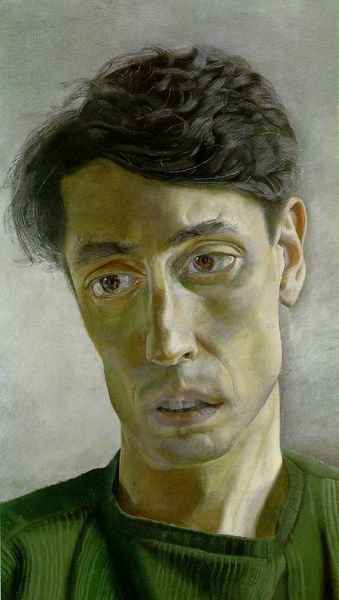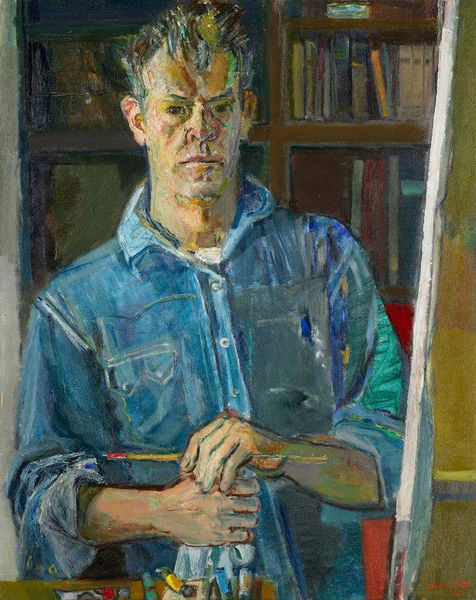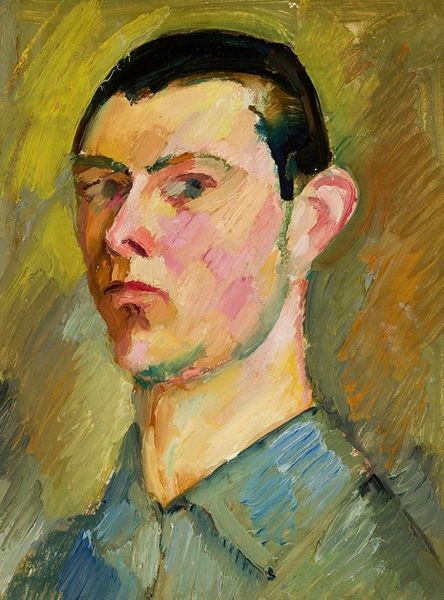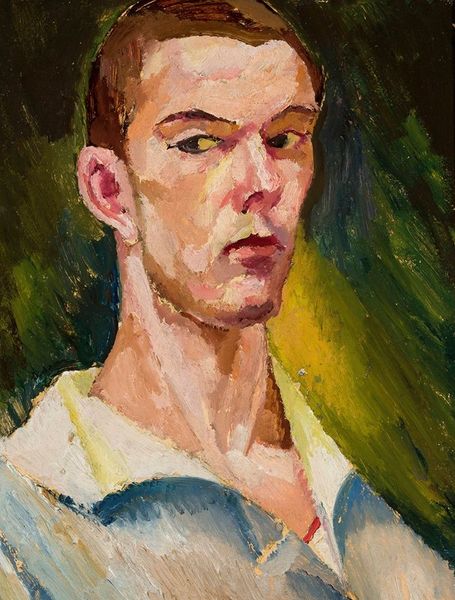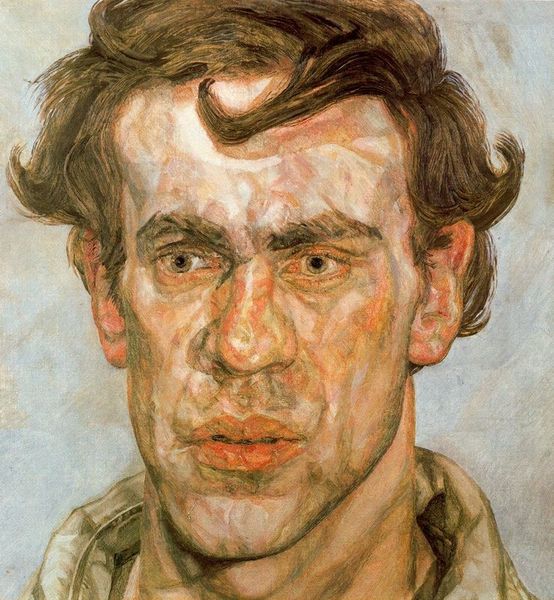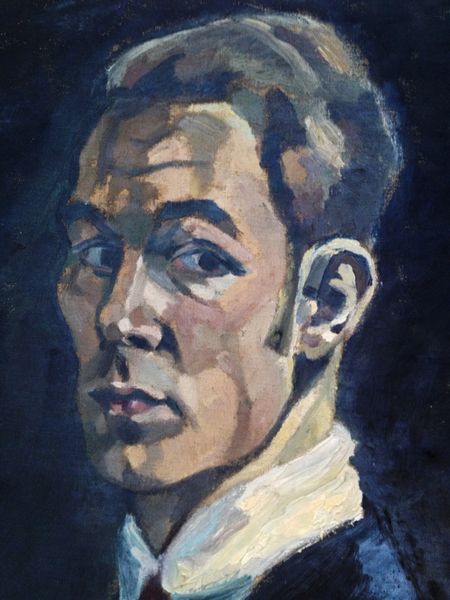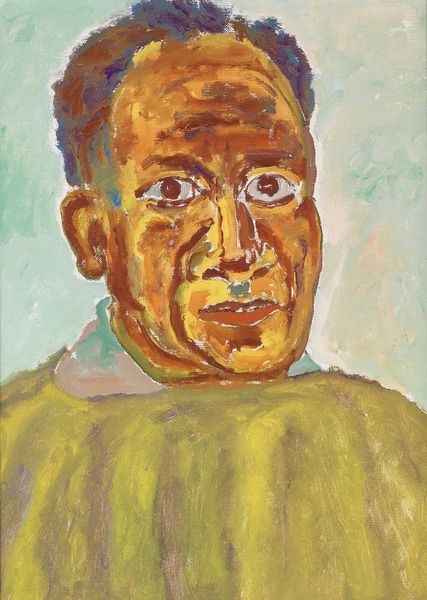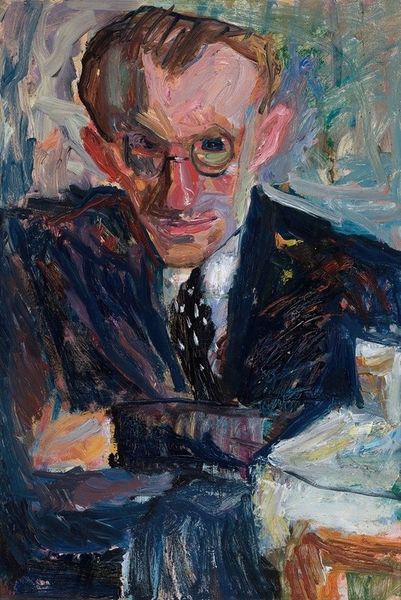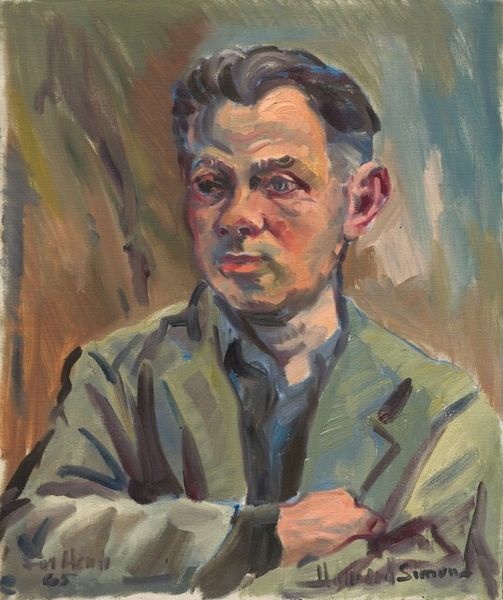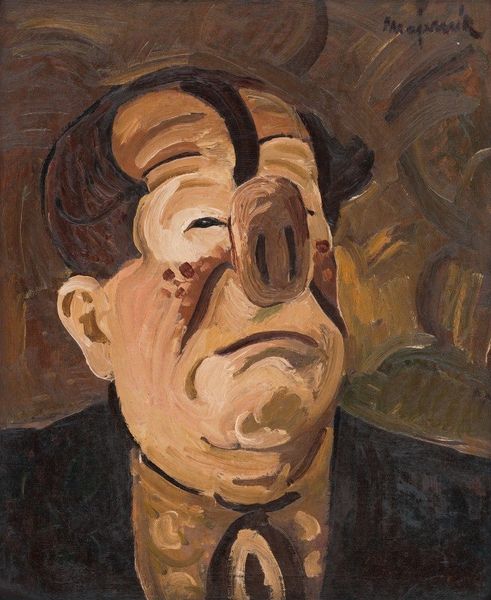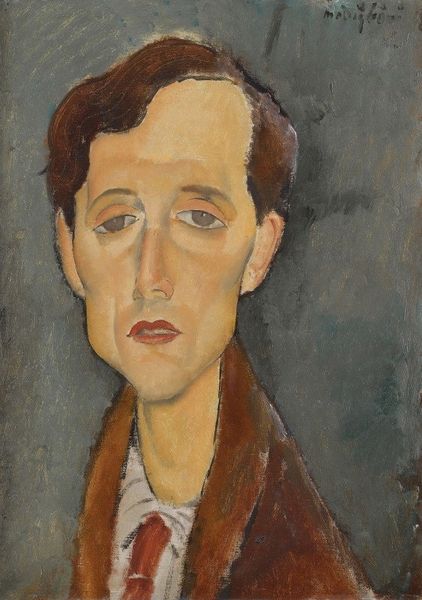
oil-paint
#
portrait
#
head
#
face
#
oil-paint
#
figuration
#
portrait reference
#
male-portraits
#
portrait head and shoulder
#
animal portrait
#
animal drawing portrait
#
nose
#
portrait drawing
#
facial study
#
facial portrait
#
portrait art
#
modernism
#
fine art portrait
#
digital portrait
Copyright: Lucian Freud,Fair Use
Curator: Lucian Freud’s 1962 oil on canvas, entitled "A Painter," is on display here. My immediate observation zeroes in on Freud’s visible brushstrokes and the almost fleshy, raw texture of the paint itself. There’s something intensely tactile about the rendering. Art Historian: Absolutely, and situated in 1962, this piece offers a look at Freud's evolving style and place within the post-war British art scene. What strikes me is how different this is from the abstract expressionism that dominated America at that time. There's a deliberate return to figuration here. Curator: I'm curious about Freud's specific choices regarding materials. He wasn't shy about exposing the paint as a substance in itself, applied in thick layers—almost sculptural. The canvas, too, feels present, not just a background, but an active participant in the image-making. How did the availability of particular pigments during that period shape the overall aesthetic, I wonder? Art Historian: That focus on materiality is relevant when contextualizing his role amidst movements advocating for “low” materials like Pop Art. In Britain, Freud stood apart, deeply entrenched in painting's historical lineage of portraiture, yet with a distinct mid-century anxiety etched on the subject’s face. How does this "return" reflect Britain’s social anxieties at the time? The lingering trauma of WWII, perhaps? Curator: And doesn’t that relate to the labour inherent to creating such heavily worked surfaces? I mean, each stroke represents a decision, an action… Freud wasn’t simply depicting someone. He built this face through layers of carefully applied material. Look at that almost brutal modelling of the features; he makes you conscious of the labour involved. Art Historian: Exactly, it is labour-intensive and very different to pop art. I wonder about how the Royal College of Art's embrace of painting, especially the encouragement of figurative work helped propel the careers of artists like Freud at the time. Did the cultural validation help to solidify the medium’s prominence in British identity formation? The figure, as you note, is almost literally built through the laborious strokes. Curator: The focus is more on conveying the physicality of a person than projecting an idea or likeness of them. Art Historian: He does have a face that doesn’t hide the weight of life, the subject. The museum's choice to spotlight Freud also plays a part. Does exhibiting these somewhat “uncomfortable” portraits now shape our view on aging, masculinity, and the human condition more broadly? Curator: Yes. I’ve gained a different viewpoint about "A Painter," and what lies at its surface beyond visual presentation. Art Historian: And I find it a relevant commentary, for today, about art production at the crossroads of tradition and new art trends, and the enduring importance of art in reflecting our societal self-awareness.
Comments
No comments
Be the first to comment and join the conversation on the ultimate creative platform.
